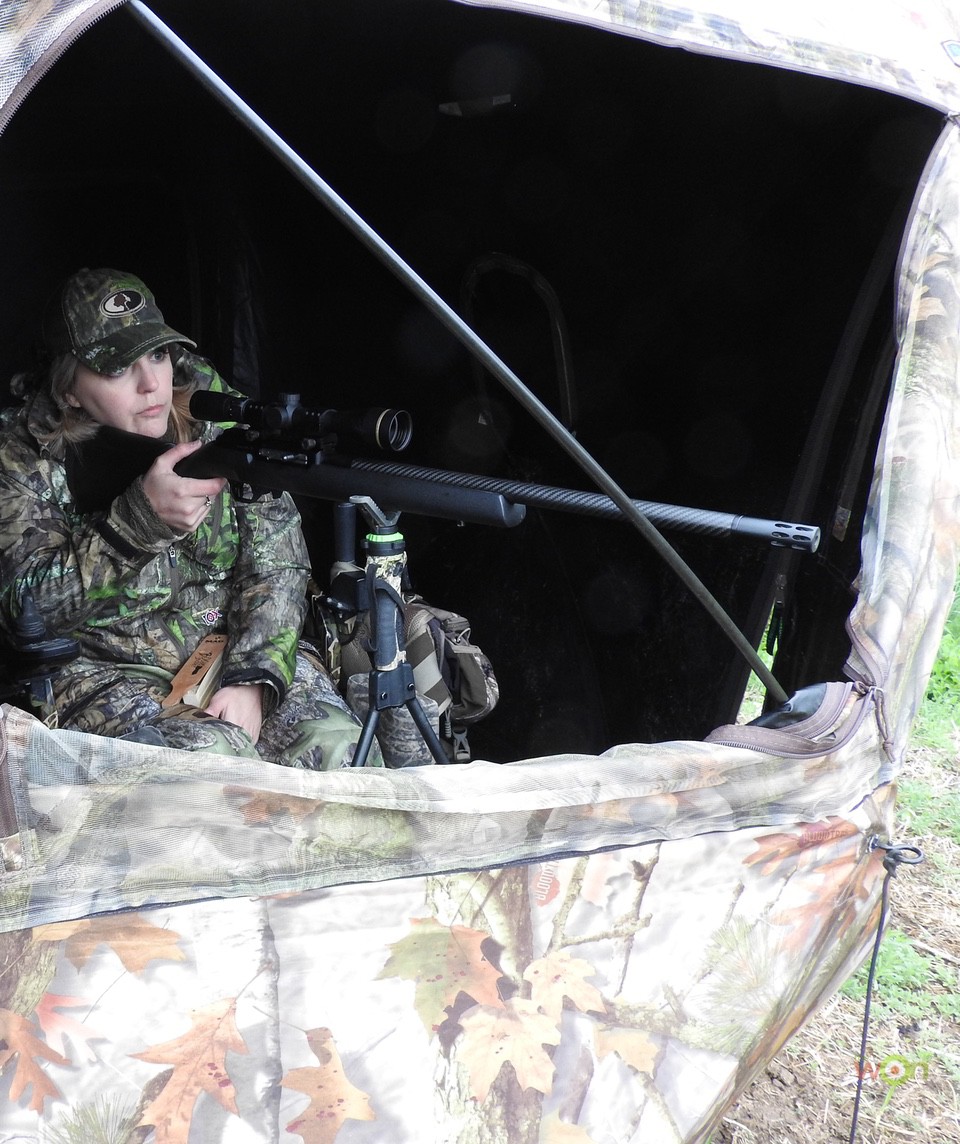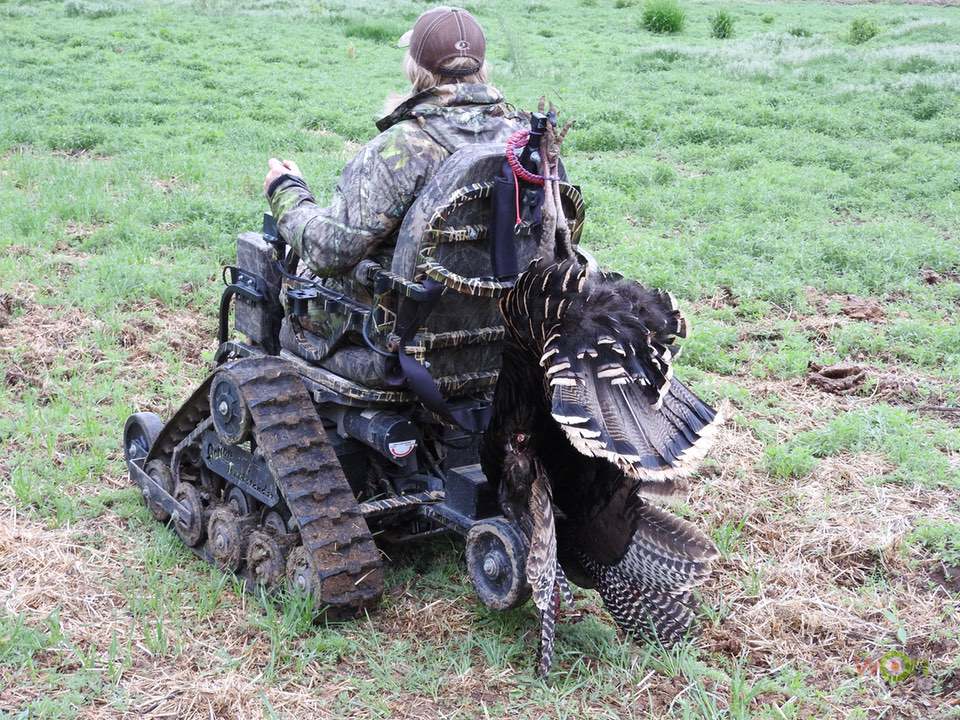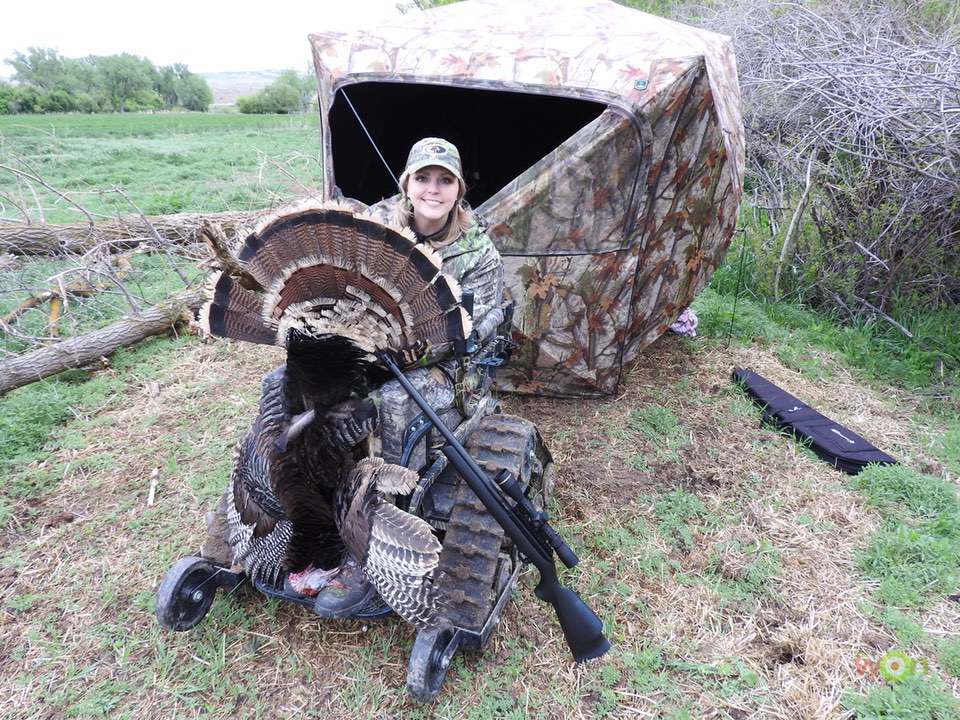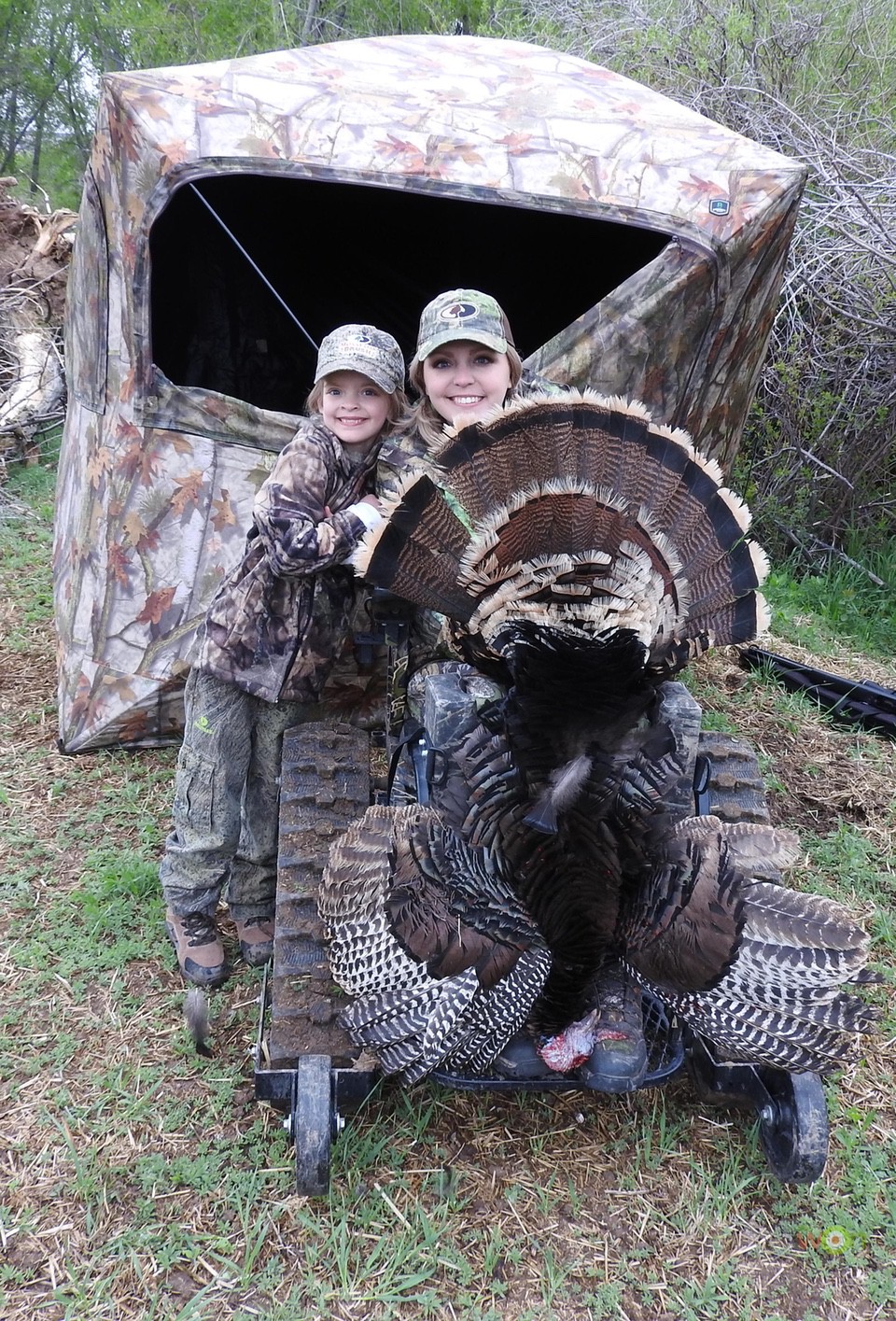When I began hunting, I was focused on big game animals. As I grew as a hunter, I started to venture out into other species, including bird hunting. I was given the opportunity to attend my first turkey hunt in 2016 with Turkey Tracks in northern Indiana, and it was a wonderful adventure. I knew that I wanted to experience that same feeling here in Wyoming, so for the last few years, I have been attempting to track down an elusive Merriam’s with no luck. Fortunately, I have a very generous friend that lives on a gorgeous piece of property inhabited by several flocks of thunder chickens. I hoped this was the year my bad luck would turn around. This might be the year that I would tag a Wyoming spring turkey, thanks to my Volquartsen rifle.
Redefining Life is sponsored by Volquartsen Firearms
I had unsuccessfully hunted this land before with my shotgun and my crossbow, so this spring, I brought out the big guns – literally. As I mentioned in my last article reviewing the Volquartsen Lightweight .17 WSM rifle, Wyoming Game and Fish regulations allow for this caliber to be used while pursuing wild turkey. I was pleased with how the firearm performed at the range, so I decided to try my hand at using it for my turkey hunt.

Ashlee Lundvall setting up with her Primos Trigger Sticks bipod and Volquartsen .17
The first morning, I headed out before dawn with my husband and daughter. We set up our ground blind on the edge of a clearing where we had seen birds the year before. We knew that they passed close to the area on their way to feed in the adjoining fields, so we thought it would be a good place to start. As the blackness started to fade to a gray blue, I decided to try a few yelps with my MAD Boom Box call to see if I could zero in on where the birds were roosting.
Right away, we heard a gobble; that sound always sends a shiver of excitement down my spine! It sounded like the tom was to our left, so I decided to engage him as best I could. We spent the next hour or so going back and forth before I finally spotted him walking a fence line in a clearing about 250 yards in front of our blind. He had another tom with him, but they were too far out and walking parallel to our position. The bird duo continued to strut back and forth out of range for most of the morning, continuing their vocalizations before moving to our right and out into a vacant field. We decided to try and wait them out, and I continued to call in the hopes of drawing them back closer to our blind.
By late morning, the birds had gone silent. We did see the toms again with a few hens closer to our hiding spot, but they were in a grove of trees too thick to allow for an accurate shot. I knew the Volquartsen was reliable, but with the small target of a turkey head, I wanted a clean shot – under 50 yards if possible. We decided to pack it up for the day and return later in the afternoon for round #2.
We knew the turkeys were being drawn from their roosting area to the bountiful food in the surrounding fields, so we decided to set up just outside the clearing we had used that morning. Our plan was to catch them returning to roost in the early evening, and the idea might have worked had it not been for the rain. We sat in the truck for a while trying to wait out the downpour. When it became evident the deluge wasn’t letting up anytime soon, we decided to make a run for it. For an able-bodied person, this might have been a safe bet, but by the time we unloaded my Action Track Chair from the bed of the truck, grabbed our gear, barreled off towards our new location, and popped open the blind, we were soaked. And worse, we had been spotted. If anyone think that turkeys are dumb birds with poor hearing and eye sight, they obviously haven’t hunted them for long. We had blown our cover, so we agreed to use the remaining daylight to practice calling and just study the birds. They stayed well out of range, but we were able to observe their behavior and practice different calling techniques with no pressure to take a shot. It ended up being an educational and profitable experience!

Ashlee Lundvall harvesting a Wyoming Merriam’s in her Action Track Chair
We were determined to learn from the past day’s adventure, and set up in the rainy day location. Under a clear sky of waning darkness, we settled in to see if we could catch the birds on their morning jaunt into the fields. I loaded the Volquartsen and with the safety on, placed it on my Primos Trigger Sticks bipod. With the butt of the rifle on my shoulder, I settled in to run my first series of calls of the morning.
Before I could remove the rubber band from the box call, several hens walked out of the trees to our left and started out across the field directly in front of our blind. We froze and watched them, 6 in total, as they fed their way towards a larger field on our right. I hoped that the toms were close behind, but I didn’t want to spook the hens, so we waited for them to settle down a little farther out before I threw out my first yelp. It took a few tries, but I finally heard 2 separate gobbles. Just like the previous hunt, the toms were several hundred yards in front of us walking parallel to us and the hens. I could see right away that they intended to circle around to meet up with their hens while completely remaining out of reach of our blind. I knew I had to change their minds.

Ashlee Lundvall with the Volquartsen Lightweight .17 WSM rifle
I spend the next 45 minutes attempting to convince those 2 toms that the grass really was greener on the other side; in our case, on our side of the barbed wire fence separating their location from our own. Just when I thought they had bought into my sweet talk, they would duck behind a natural berm and I would lose them entirely. Then one would pop out and strut and gobble before going into hiding again. We played this game of hide and seek for another 30 minutes before one of the toms suddenly appeared at the top of the berm. He froze for several seconds in a perfect position for a shot, but without having a clear idea of what was behind the berm, I decided to wait for something safer.
My gut instinct paid off. I don’t know if it was his companion’s seemingly safe perch that gave him the courage, but the second tom suddenly came out from behind the hill and through the fencing 40 yards in front of the blind. I sat my call on my lap and readied the rifle for a shot. The tom, now suddenly cautious, was walking back and forth, slowly bobbing his head up and down. I flipped off the rifle safety and waiting for the split second when I hoped he would freeze. He did, and I squeezed off a shot aiming for his blood-red head.
I missed. I knew I didn’t have much time as he turned to flee behind the fence. Quickly I reached down blindly and smacked the box call on my lap. It gave a very un-turkey-like screech, but it was enough to shock the tom into pausing for another split second; this time it was a fatal mistake. I set the cross hairs of the Leupold VX-Freedom scope at the top of his wing where I hoped I could take out organs without damaging any of the breast meat. Thankfully, my aim was true and my rifle was accurate. I had a Merriam’s tom on the ground.
I learn something new every time I hunt, and this morning was no exception. Hunting is all about being able to adapt in the field, and I was so thankful to get to experience this adventure with my family. I hope I never take it for granted, and that I do all I can to ensure that these amazing opportunities are available for generations to come.

Ashlee Lundvall and her daughter, Addison, after a successful Wyoming spring turkey hunt
Ashlee Lundvall writes a blog titled "Redefining Life," that follows her rise from a debilitating injury as a teenager to Ms. Wheelchair USA in 2013. Her first book, "A Redefined Life," was published in February of 2016, and she is on National Pro Staff for Mossy Oak and the NRA’s Disabled Shooting Sports committee. Ashlee is also the recipient of the 2017 SCI Foundation Pathfinder Award. Ashlee truly shines as a keynote speaker at outdoor industry and disability related events and conferences. She is passionate about mentoring newly injured patients, and loves to pass on her love for adapted outdoor recreation! View all posts by Ashlee Lundvall